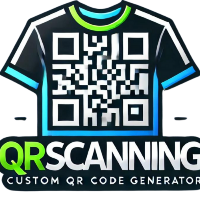
Share
QR Codes for Product Authentication: Stop Counterfeit Products with a Simple Scan
Estimated reading time: 8 minutes
Key Takeaways
- Counterfeit products cost brands billions and erode consumer trust.
- QR Codes for Product Authentication enable instant verification of product authenticity.
- Secure QR codes are encrypted and unique, making them difficult to counterfeit.
- Implementing QR codes helps brands protect their products and gather valuable data.
- Real-world examples demonstrate the effectiveness of anti-counterfeit QR codes.
Table of Contents
- Understanding QR Codes for Authenticity
- Product Verification QR Codes: Scan and Confirm
- Anti-Counterfeit QR Codes: Protect Your Brand
- How to Use Scan to Verify QR Code Systems
- Designing a Strong QR Code Authenticity Label
- Benefits of Using QR Codes for Authenticity
- Implementing QR Codes for Product Authentication: Step-by-Step
- Real Brand Examples Using Anti-Counterfeit QR Codes
- Conclusion: Why QR Codes for Product Authentication Matter
- Call to Action
Understanding QR Codes for Authenticity
QR Codes for Product Authentication are smart digital tags printed on product packaging or labels. When scanned, they connect to a website that confirms the product's authenticity.
Here's how it works:
- Each QR code for authenticity is unique.
- Scan it using a smartphone—no app needed.
- It links to a backend system that verifies the product.
Unlike regular QR codes that can be copied, secure QR codes are encrypted and unique for each product, making them difficult to counterfeit.
Product Verification QR Codes: Scan and Confirm
Product verification QR codes offer extra security. Here's how consumers use them:
- Locate the scan to verify QR code on the product.
- Open their phone camera or QR reader.
- Scan the QR code.
- Access a webpage confirming the item's authenticity.
These pages provide details like product name, time of scan, and authenticity status. Each scan helps brands track patterns and detect counterfeits.
Anti-Counterfeit QR Codes: Protect Your Brand
Anti-counterfeit QR codes are designed to thwart counterfeiters:
- Each code is serialized or single-use.
- Some codes become invalid after one scan.
- Encrypted designs make them hard to replicate.
Benefits include:
- Real-time scans confirming product authenticity.
- Enhanced customer trust.
- Reduced brand damage from unauthorized copies.
Leading brands worldwide are adopting these systems to protect their products.
How to Use Scan to Verify QR Code Systems
For Brands:
- Implement scan to verify QR codes on your packaging.
- Link codes to a data system that verifies each product.
- Ensure codes are unique and secure.
For Consumers:
- Look for labels with "Scan to verify product authenticity."
- Scan using a camera or QR reader.
- Ensure the link directs to a secure website.
- If uncertain, scan again or report the product.
Education is crucial. Brands should guide users on utilizing these systems effectively.
Designing a Strong QR Code Authenticity Label
An effective QR code authenticity label should appear secure and be easy to scan. Consider adding:
- Microtext or holograms for added security.
- Your logo or brand colors to reinforce brand identity.
- Clear instructions, such as "Scan to verify product authenticity."
- Optimal placement to prevent damage to the code.
A well-designed label boosts consumer confidence in your products.
Benefits of Using QR Codes for Authenticity
Why implement a QR code for authenticity?
- Combats counterfeiters with unique tracking.
- Enhances trust—customers can verify products instantly.
- Strengthens brand image as trustworthy and safe.
- User-friendly—scannable with any smartphone.
- Data collection—track who scanned, when, and where.
Brands using secure QR codes report increased ROI and customer trust.
Implementing QR Codes for Product Authentication: Step-by-Step
Here's how to start with QR Codes for Product Authentication:
- Review your product lines. Identify products at risk of counterfeiting.
- Choose a trusted QR code provider. Opt for services offering secure, encrypted codes.
- Print secure QR code authenticity labels. Incorporate brand elements and clear instructions.
- Integrate the QR system with a backend platform. This verifies product authenticity upon scanning.
- Train your team. Ensure staff can explain and support the system.
- Educate customers. Provide instructions on packaging and your website.
- Monitor scan data. Use analytics to detect and address counterfeits promptly.
Real Brand Examples Using Anti-Counterfeit QR Codes
Several companies are leveraging QR Codes for Product Authentication:
Brand A
- Faced increasing counterfeit sales globally.
- Implemented serialized QR codes on packaging.
- Enabled customers to scan and receive instant verification.
Result: Identified and mitigated counterfeit products before widespread distribution.
Brand B
- Specializes in luxury health products.
- Added a holographic label combined with a QR code.
- Tracked the location and time of each scan.
Result: Increased buyer confidence, particularly in international markets.
Key lesson: Educate customers and choose the right secure technology.
Conclusion: Why QR Codes for Product Authentication Matter
Counterfeiters are becoming more sophisticated, and brands need advanced technology to combat them. Implementing a secure QR code for authenticity or QR code authenticity label helps:
- Protect your products from counterfeits.
- Build trust with consumers.
- Demonstrate your commitment to quality.
Now is the time to take action and safeguard your brand.
Call to Action
Need help? Get started today:
📞 Call Us: (833) 723-2800
✉️ Email: customercare@qrscanning.com
🌐 Visit Us: www.qrscanning.com


